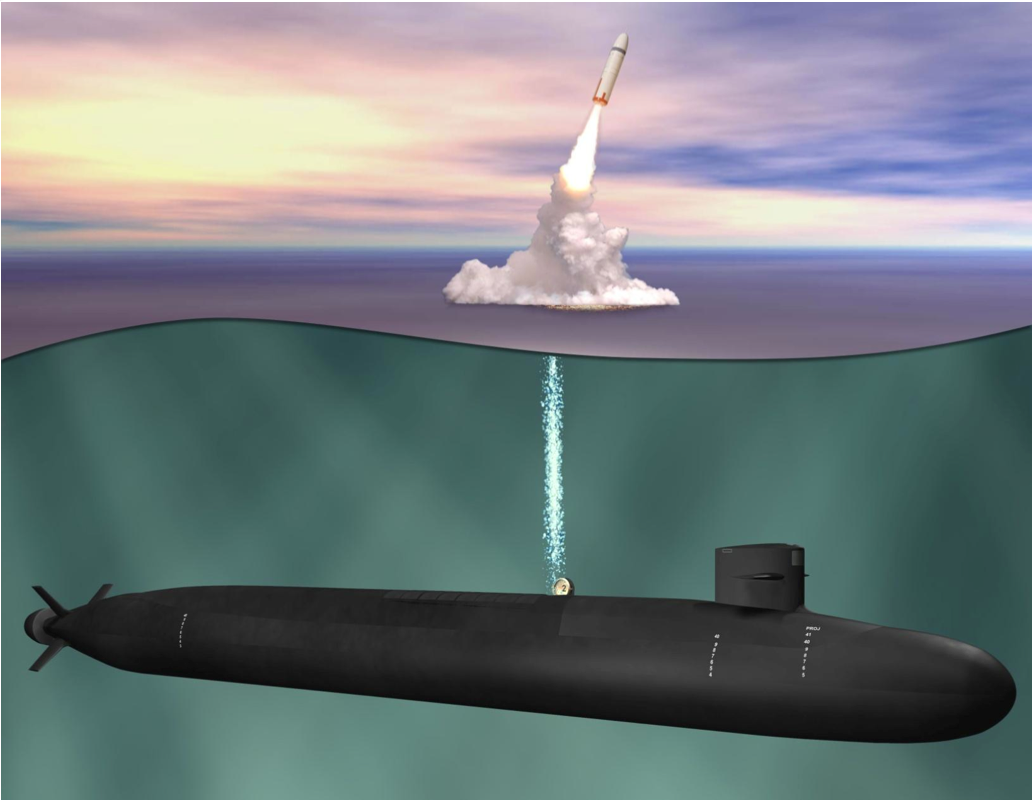
PENTAGON – Continued work on the Ohio replacement nuclear ballistic missile submarine (SSBN) will cost the U.S. Navy about $10 billion over the next five years as part of budgeting in the Navy’s Future Years Defense Plan (FYDP), a senior service budget official told reporters on Monday.
“This FYDP plan funds both the advanced procurement [for ORP] at about $5 billion and [research and development] of about $5 billion,” said Rear Adm. William Lescher, the Department of the Navy’s (DoN) deputy assistant secretary of the Navy for budget in a late afternoon briefing to reporters.
The total includes $1.4 billion in the Fiscal Year 2016 request in the Department of the Navy’s R&D budget line, according to the Navy’s budget documents.
Those funds – over five years – are split between a $3.18 billion budget line for the research and development for the development of the submarine, $1.8 billion for nuclear technology development and $5.66 billion for long lead items from the Navy’s shipbuilding account, according to Navy budget documents.
The single largest line item is an anticipated $2.77 billion shipbuilding expenditure in Fiscal Year 2019.
ORP – an estimated $100 billion program to replace the service’s 14 nuclear ballistic missile submarines (SSBN) – is the Navy’s number one priority and the service has raised concerns without additional relief, the new class of 12 boomers could take funds away from other shipbuilding programs in the service’s shipbuilding account (SCN).
“They will get built,” Lescher said.
“[But there’s] very much a concern the impact of the broader shipbuilding approach absent the relief that we think is required to do this.”
The Navy thinks it will need the relief to preserve the rest of the shipbuilding budget when the first ORP boomer starts construction in FY 2021.
“The new construction SCN averages about $15 billion per year and these boats per year – past the lead boat – will be about $10 billion per year. So it requires two-thirds of the SCN absent relief, Lescher said.
“The department’s strong view is when the construction cost with the first boat in ’21 – particularly when it gets to a boat every year from 2026 to 2035 – that additional topline relief is required. “
In 2013, the former Navy director of undersea warfare Rear Adm. Richard Breckenridge said the relief needed could be more than half the cost of the program.
“$60 billion over 15 years is what we need,” Breckenridge said before the House Armed Services Seapower and Projection Forces Subcommittee.
To that end, Congress has established a fund for a seabased nuclear deterrent but has yet to deposit any money in the account.
Programs in the Navy’s long-range outlook have already been affected by the anticipated costs of ORP.
An anticipated Flight IV of the Arleigh Burke-class destroyer (DDG-51) – that would have replaced the Ticonderoga-class cruiser’s (CG-47) air defense commander role – was deemed unaffordable during the Ohio replacement period.
The class of 12 ORP boats will displace more than 20,000-tons and be the largest submarines the U.S. has ever constructed. The boomers will each field 16 Trident II D5 submarine launched ballistic missiles to replace the 14 existing Ohio-class boats.





